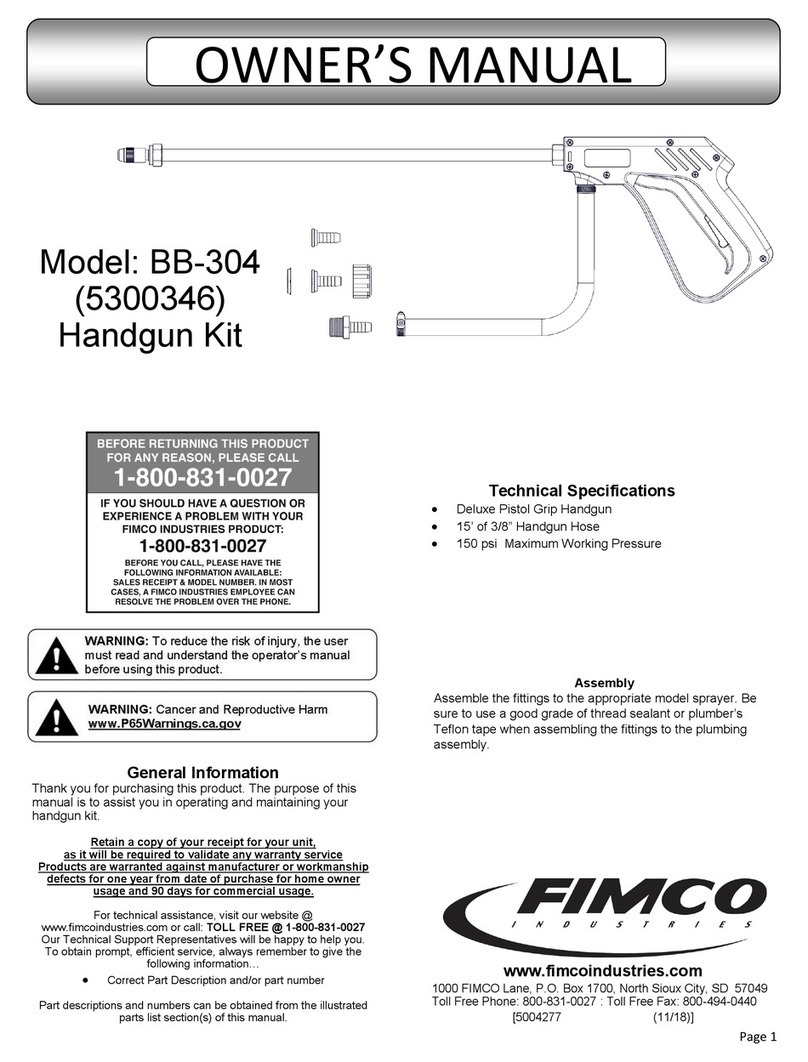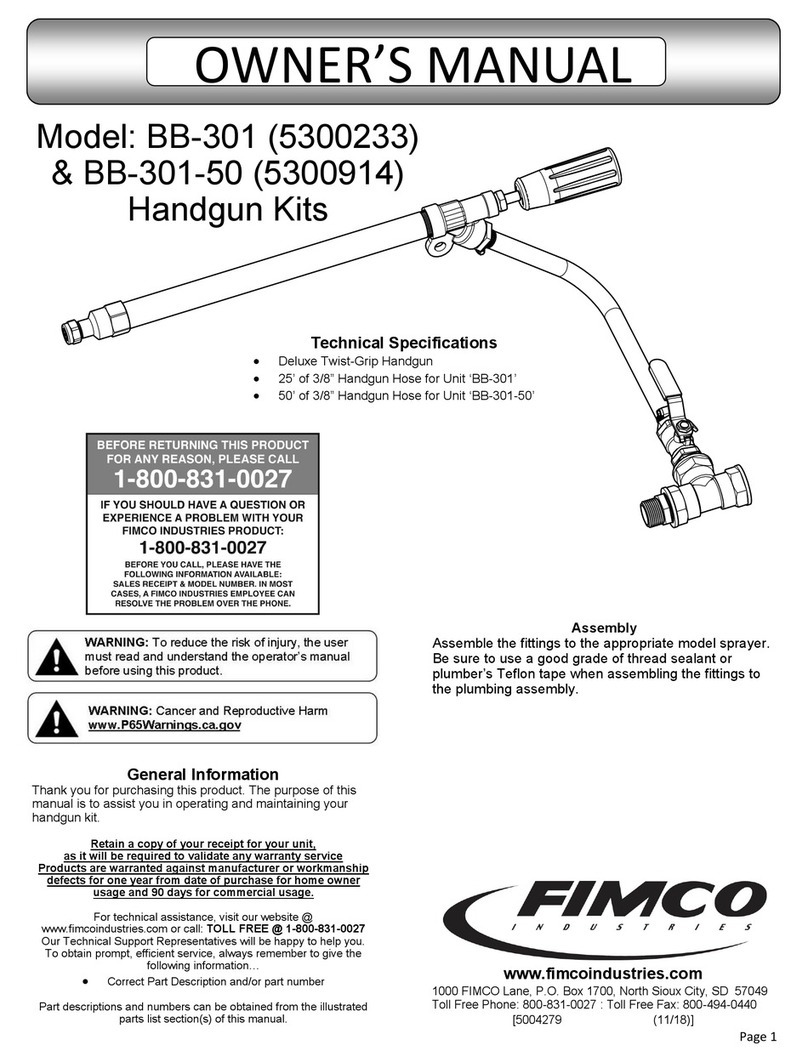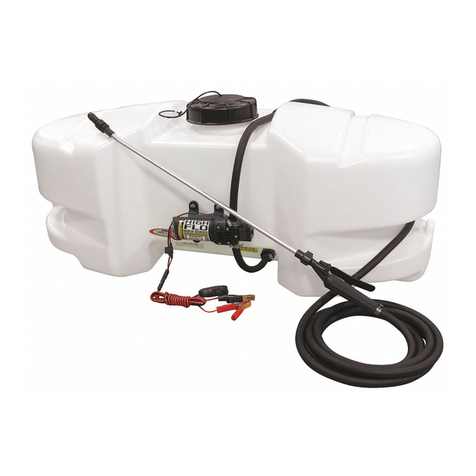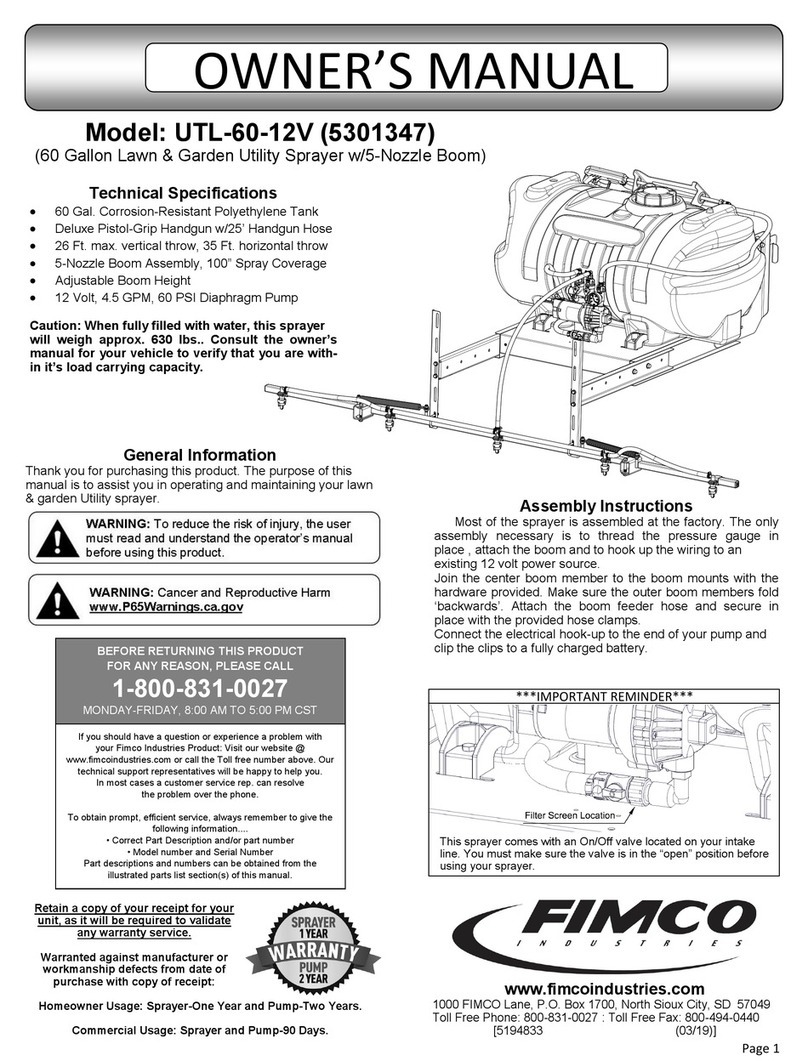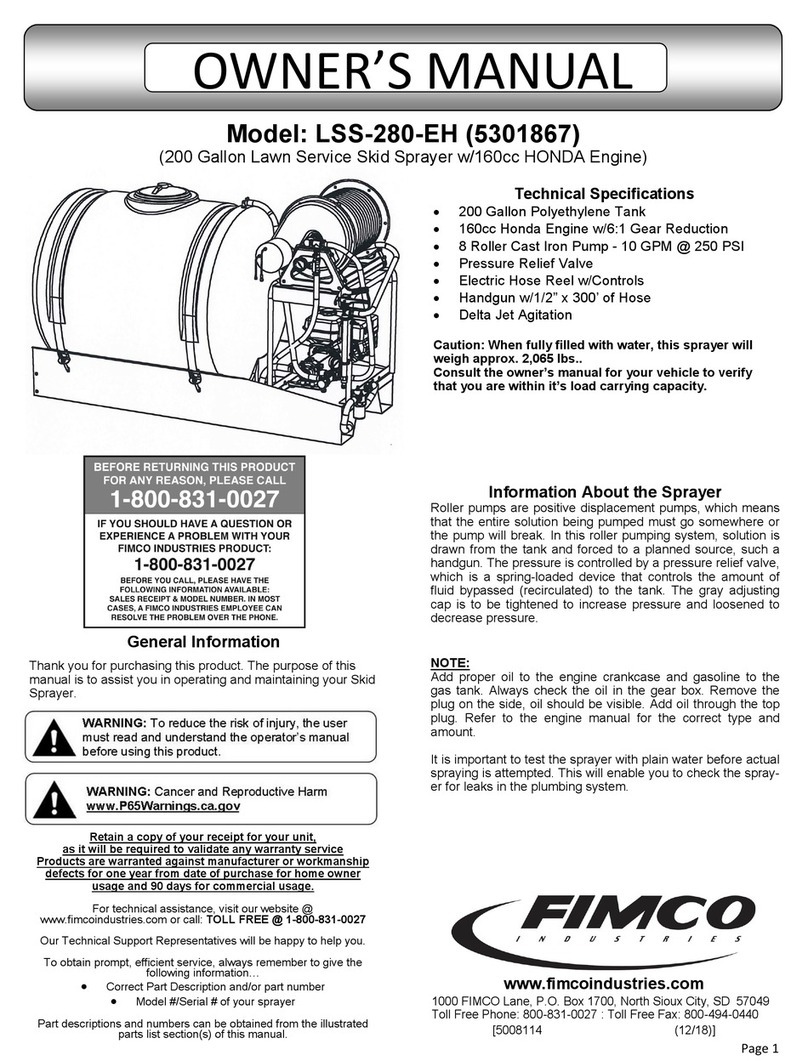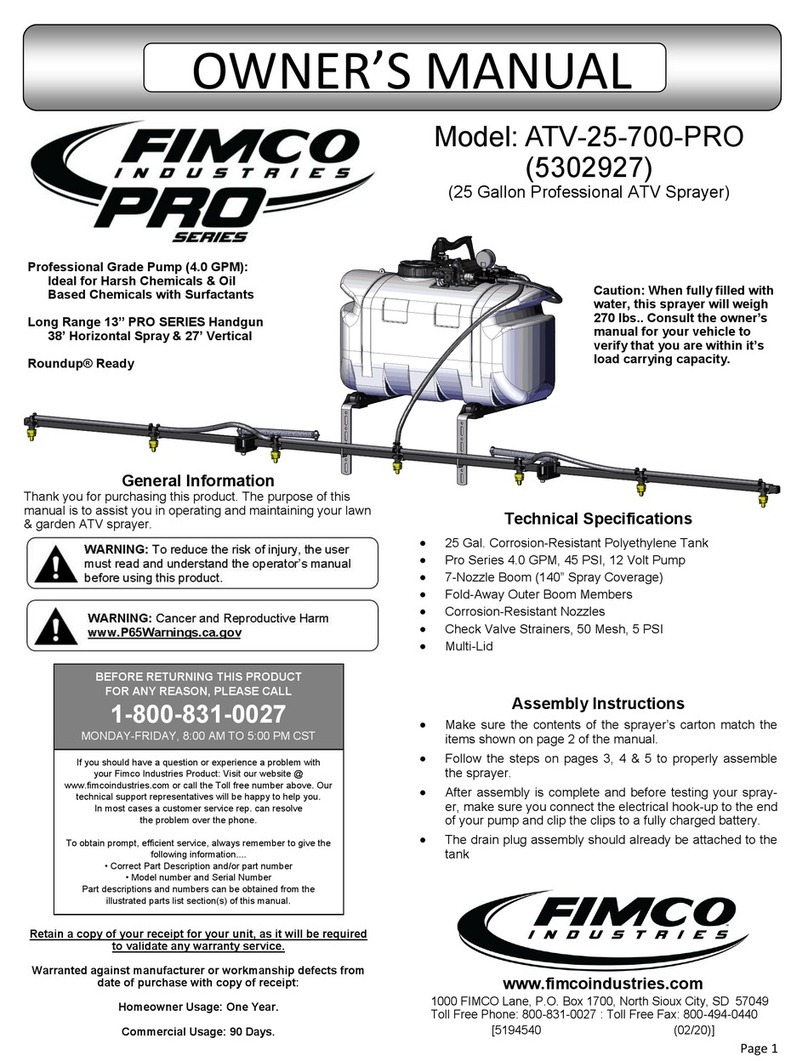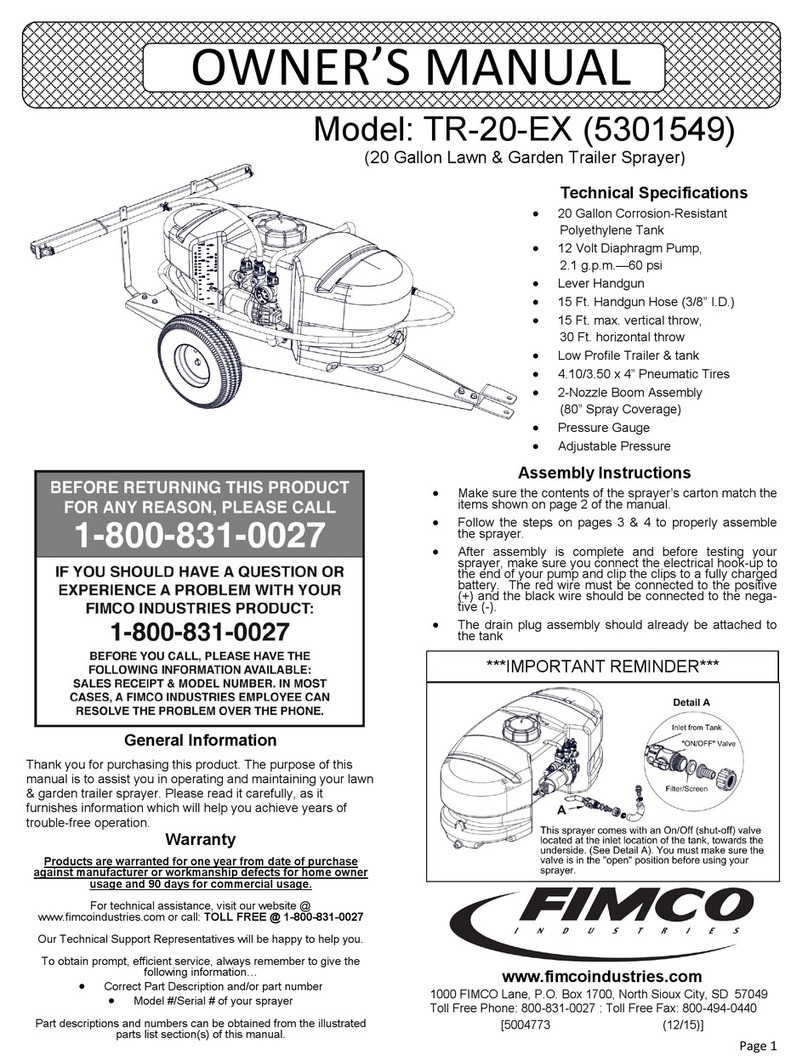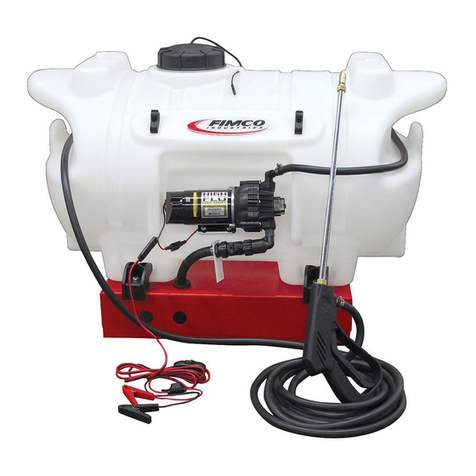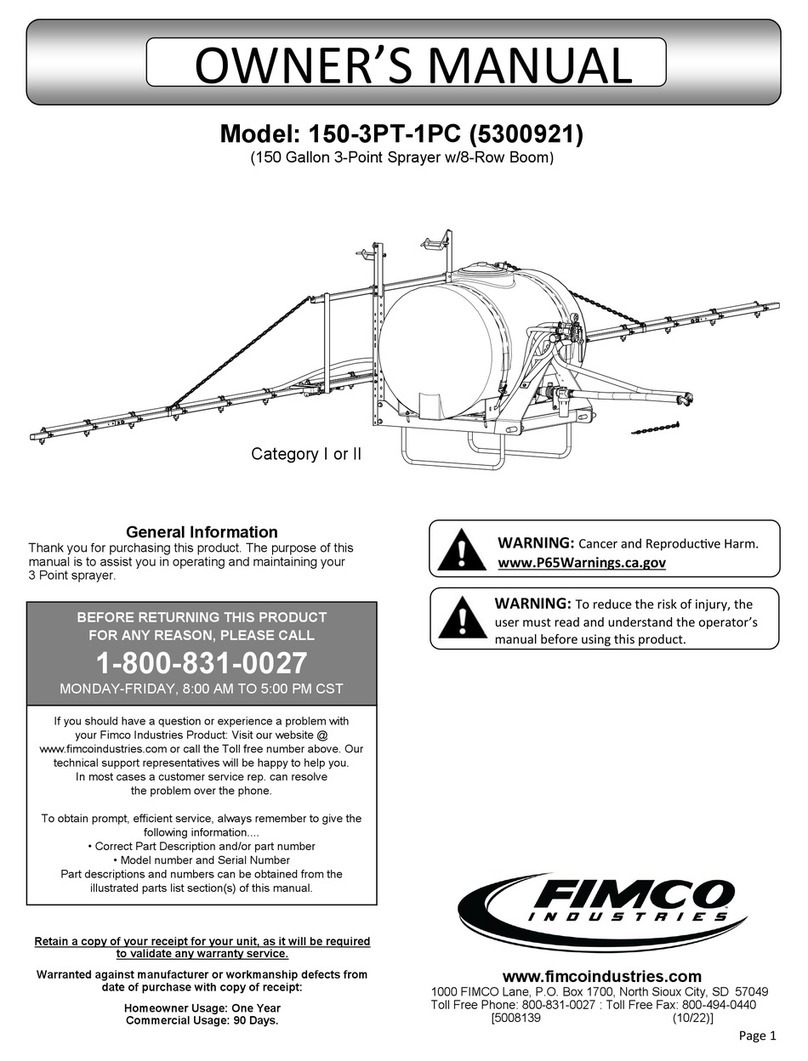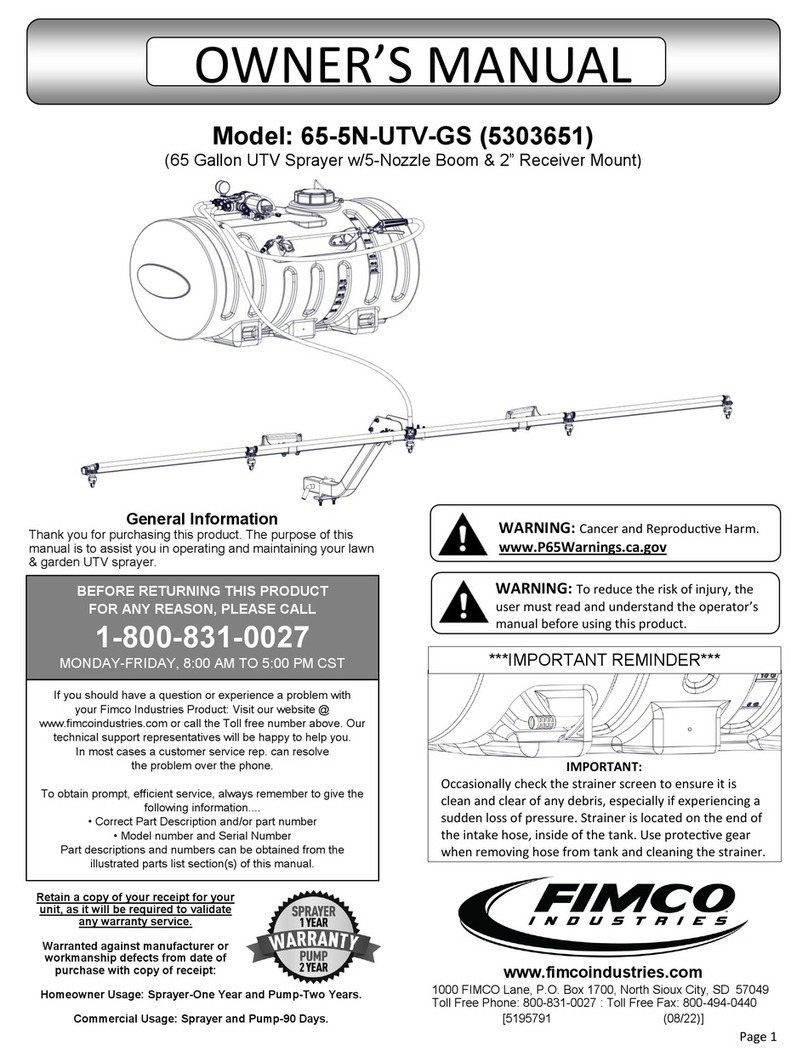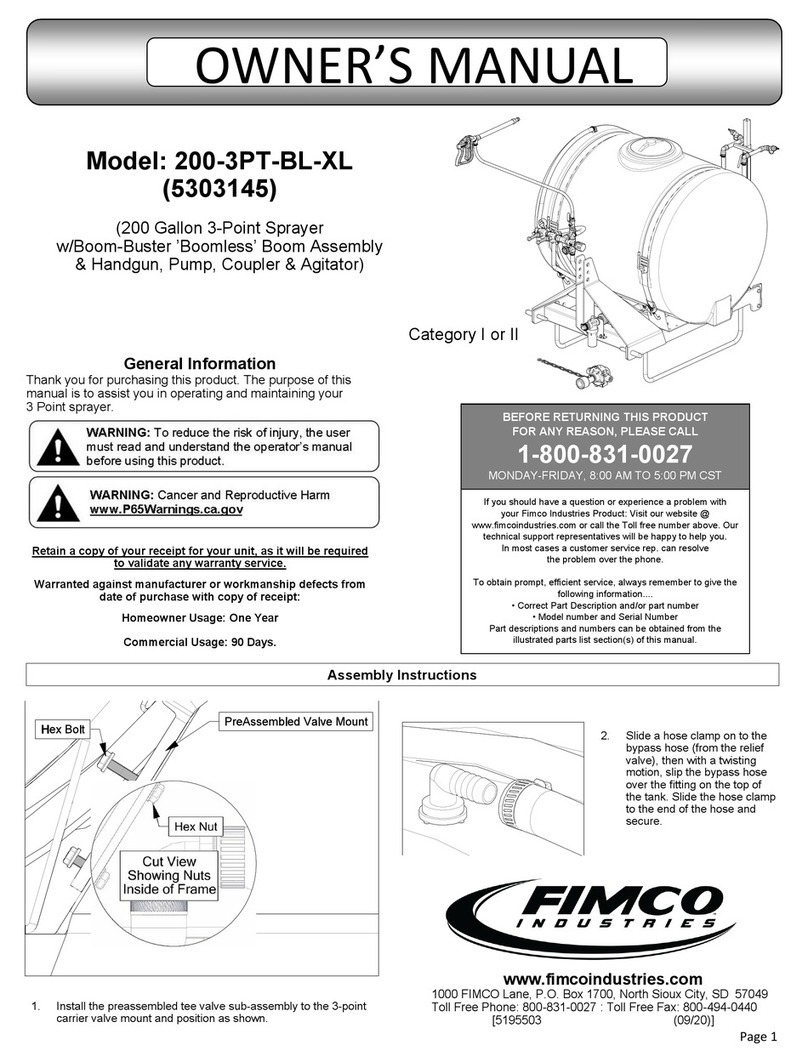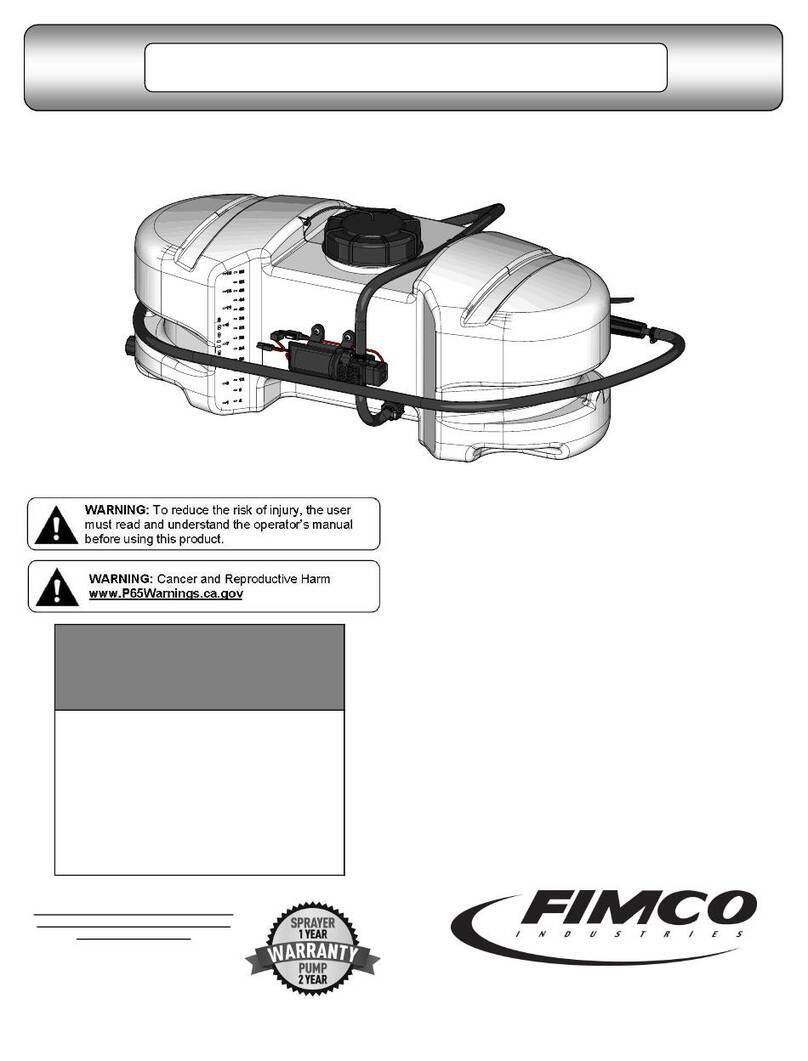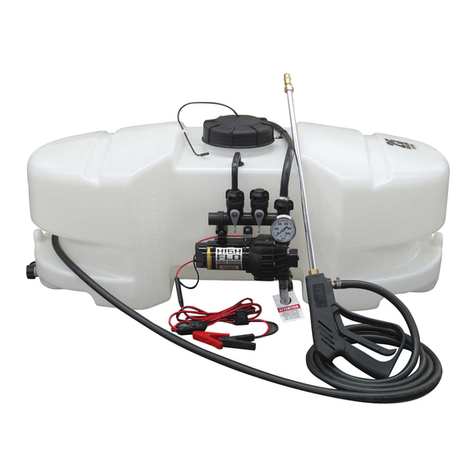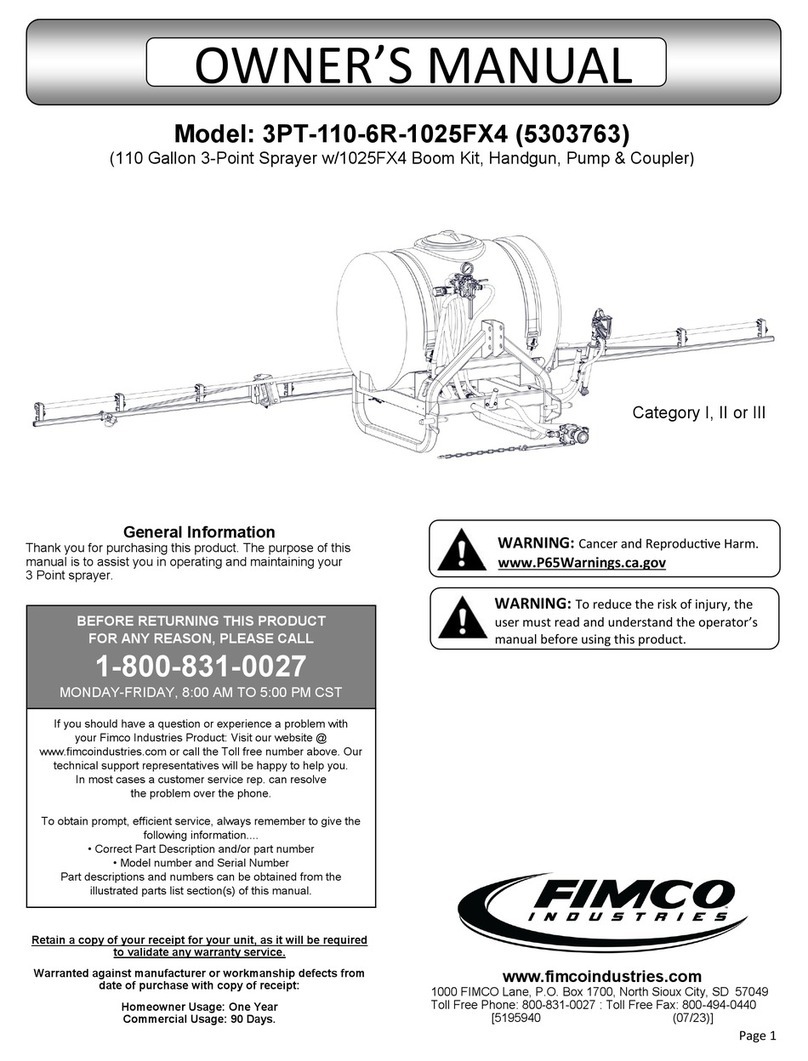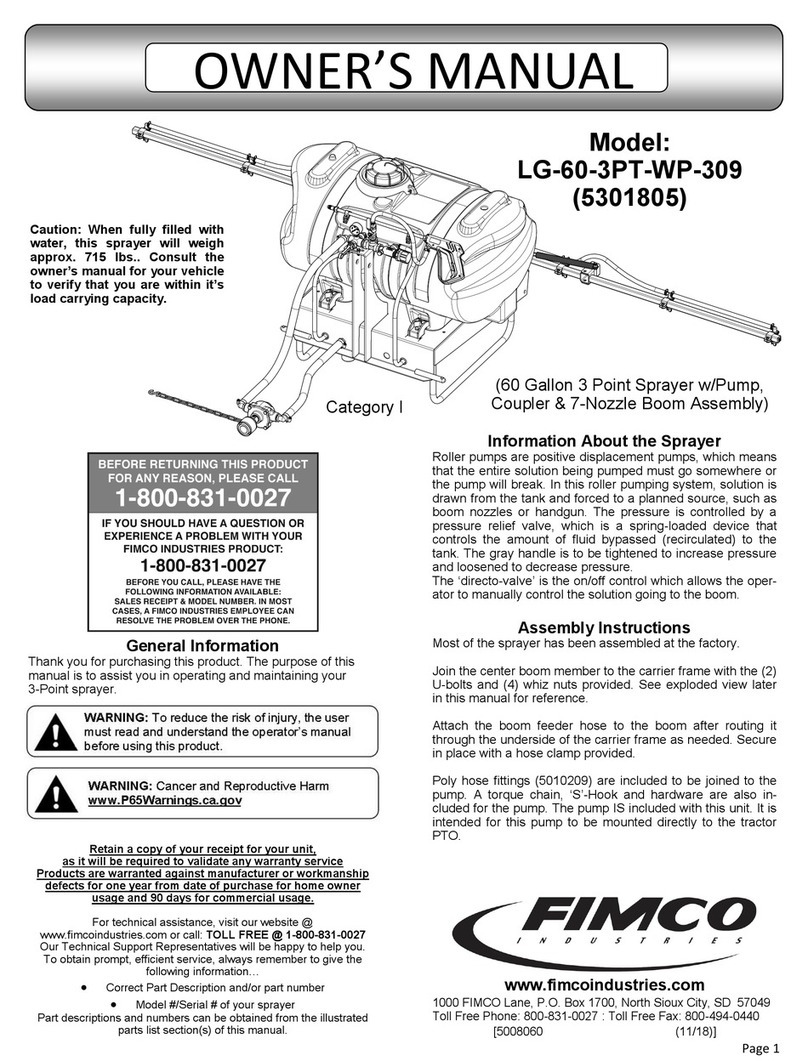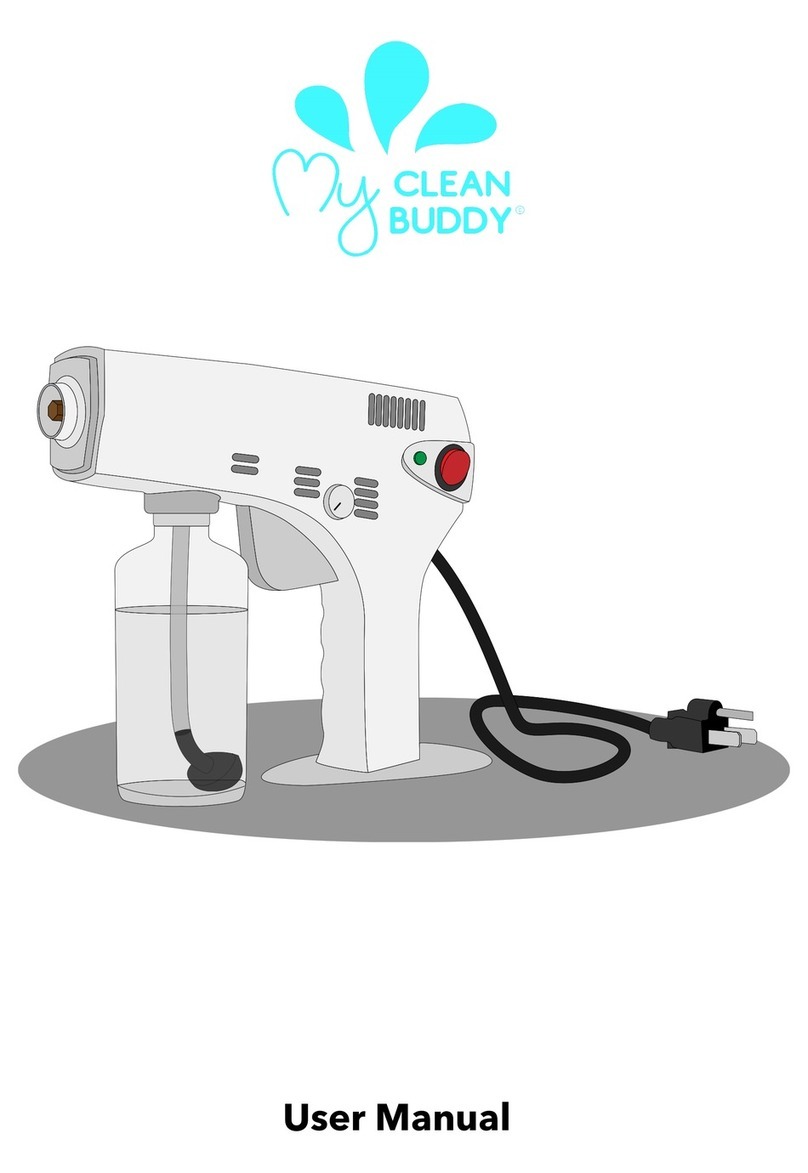Page 10
Motor is NOT Running - Checking the Pressure Switch:
If motor is not running and you’ve checked the following: for loose wiring connections,
fuse, switch on lead wire was “ON” and made sure you were connected to a fully charged
battery but the motor won’t run, then it’s time to check to see if the pressure switch is bad.
• Remove the cover off the 1” square box (pressure switch) on the head of the pump,
the cover is held on by one phillips-head screw. This will expose the two red wires.
• With the pump connected to a good 12 volt power source and everything on.
• Slip the two red wires off the terminals and touch them together.
♦ If motor runs, it means the pressure switch is bad and needs to be replaced.
♦ If motor still doesn’t run, try bypassing the switch in the lead wire or using another lead
wire. Even if a tester shows power to the pressure switch, still try this test.
Warning: It is NOT recommended to run the pump this way, as the pump
will continue to run and not shut off.
This could result in blown hoses when all discharges are closed or
premature failure of the pump completely.
Motor Running-BUT No Pressure - - Cleaning the Check Valve:
Experiencing little to no pressure or pump is not priming and filter screen is clean
and plumbing is good with no leaks, you may need to clean the check valve.
• Remove the head of the pump, which is held on by 7 screws.
• First part inside the head of the pump is the check valve, this part responsible for building up
pressure and pumping water/solution through the lines.
• Clean the check valve under hot, soapy water (such as a good grade dish soap).
• Lightly scrub, if needed, with something like an old toothbrush, something with soft bristles.
• Let soak for about an hour or so in the hot soapy solution, replace in the pump and reassemble.
Most times this will restore most, if not all of the prime of a pump.
If still having issues with pressure after this step, it would be recommended to replace this part.
Before Troubleshooting or Attempting to Service the Pump:
♦ Review Troubleshooting Chart: Do Not attempt to repair until steps below are followed.
♦ Personal Protective Gear: Wear protective gear when servicing pump.
♦ Disconnect Power: Disconnect the power to the pump and relieve the pressure from the system.
♦ Empty and Flush the pump system with water, never attempt to service the pump until it has been emptied and
flushed.
♦ Perform Repairs: Follow directions provided in the troubleshooting section to repair the pump.
♦ Test: Always test the pump for leaks with plain water after any repairs before using.
Sprayer and Pump FAQs:
♦ Why does the pump not run all the time?
This is an on-demand pump and only runs when a discharge is open (spray gun, bypass, boom (if applicable) or a
leak is in the system.
♦ Why does the pump surge while using the spray gun?
Low flow/high pressure may cause the pump to surge (or cycle). Typically the spray wand is adjusted at too fine of a
mist, to overcome, adjust the nozzle for a higher flow.
♦ How do I adjust the pressure?
Pressure can only be adjusted by opening the pressure adjust (bypass) valve to allow some of your water or
solution to return to the tank (if equipped).
♦ Pump quit and will not run, what do I need to do?
Squeeze trigger on spray gun to ensure that the system isn’t just pressurized up with discharges closed.
Check electrical connections, ensure switch is on. Check fuses. Check for proper voltage. Check pressure switch.
♦ Low flow or no flow at all, what do I need to check for?
Check for a clogged or kinked intake hose and/or clogged intake strainer. Check for proper voltage.
You will need to occasionally check your intake strainer to ensure that it is clean of any debris.
♦ What is causing the fuse to blow each time I turn the pump on?
Check for excessive voltage. Improper adjustment of the pressure switch. Damaged or defective wire harness or
defective pressure switch.
Warning:
Ensure the wiring harness does not become pinched or damaged in any way. This may damage the pump or cause
the wiring harness to overheat, resulting in a melt down or fire.
